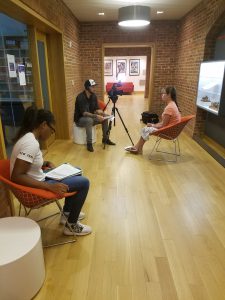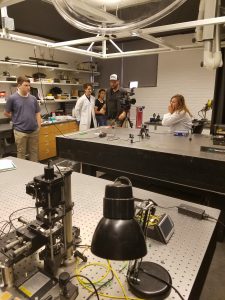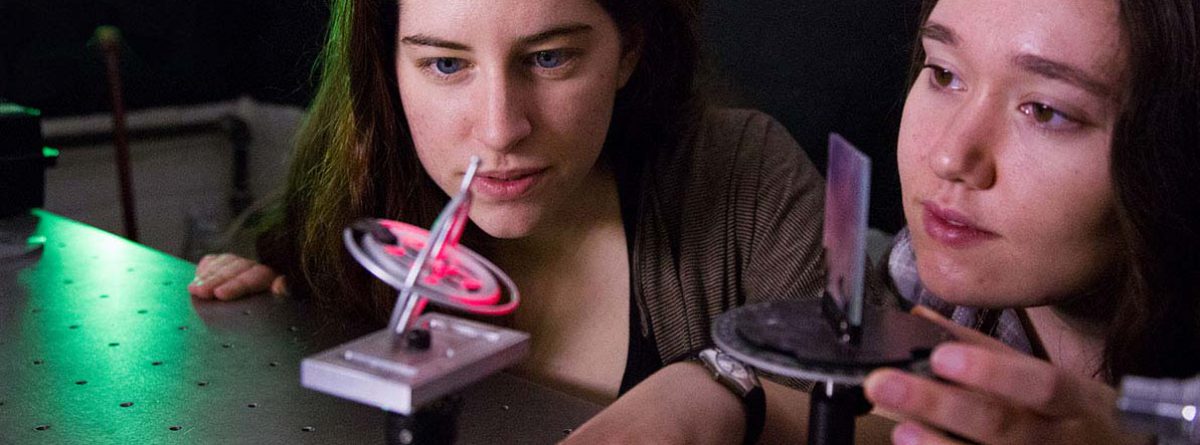The Vassar Applied Optics Laboratory (VAOL) lead by Prof. Magnes has been collecting and analyzing diffraction patterns that result from placing a C. elegans nematode into a low-intensity laser beam. The work was recently accepted to be published in the Journal of Visualized Experiments (JoVE).
JoVE is an online journal that publishes video solutions in addition to a traditional text manuscript. The journal founder decided to include videos as a response to the current crisis in research reproducibility – according to the JoVE website, only 10%-30% of today’s scientific articles can be successfully reproduced. While there can be many causes, print directions can be unclear or difficult to follow, and authors may assume that techniques developed in lab are universally practiced or implied by their directions. To address this issue, JoVE includes includes a video with audio instruction and explanation alongside its publication. When submitting work to be published, authors note the “hands-on” steps in their lab, which will be included in the video that goes alongside the written introduction and procedure.

After a manuscript is approved for publication, a videographer meets with the authors to film segments of the video. The authors choose a well-lit area to record a short spoken introduction that introduces the purpose and background behind the method (as seen in the photo above). After this, the experiment is filmed in the laboratory including the setup, data collection, and data analysis. The authors also demonstrate proper safety and handling techniques, like wearing proper protective eyewear when working with lasers and keeping the laser’s beam below eye-level.

Although a majority of the video was recorded by the videographer, some of the videos were collected by the VAOL with proper equipment for recording images on a microscope. Screen capture software was used to record data collection and analysis techniques performed on the computer. All of these videos were sent to be edited and processed by JoVE, who will release the video onto their website soon.
Please explore the JoVE website (https://www.jove.com/) for more details, and to view our published article:
https://www.jove.com/video/56154/fourier-based-diffraction-analysis-of-live-caenorhabditis-elegans
